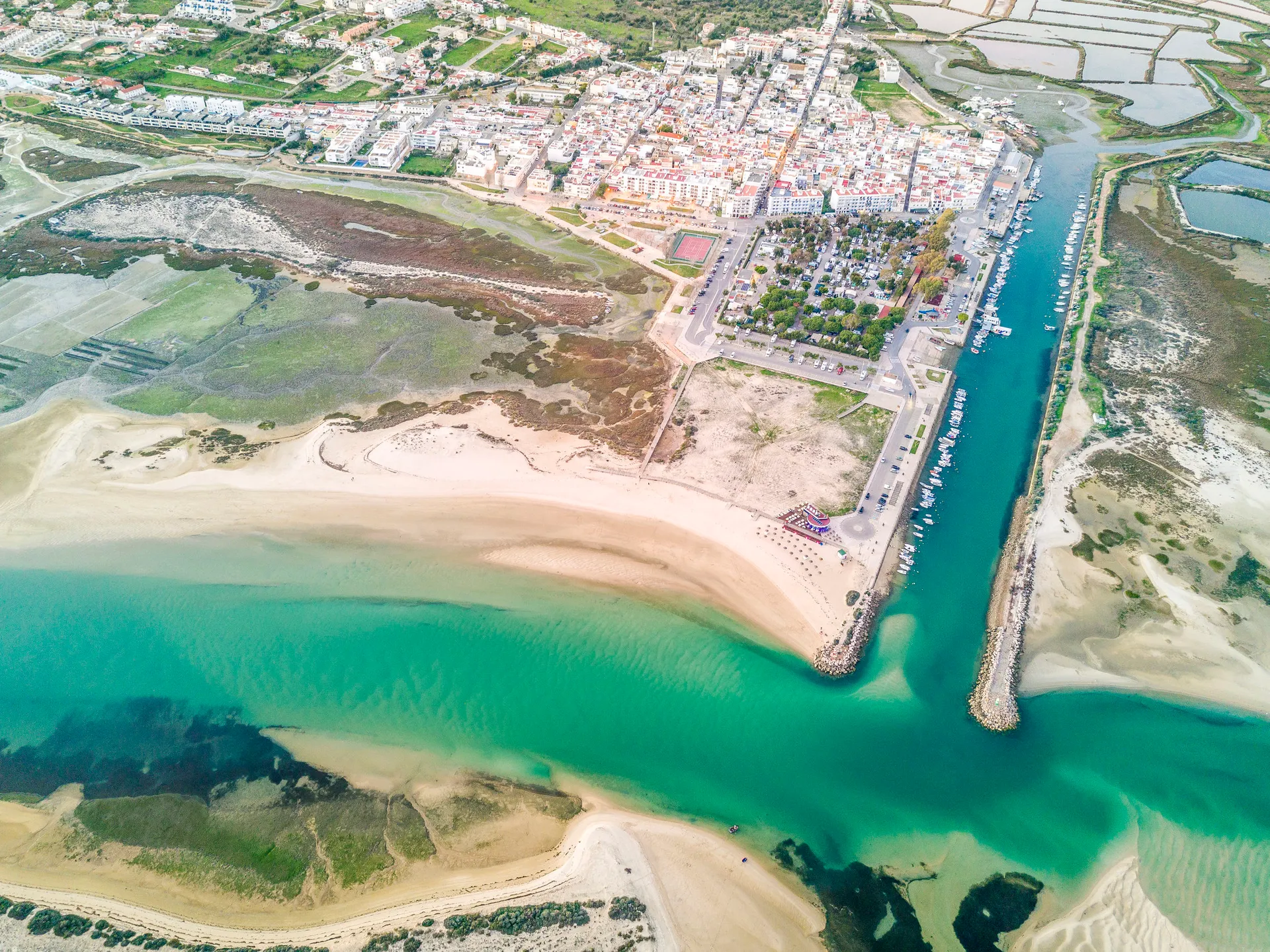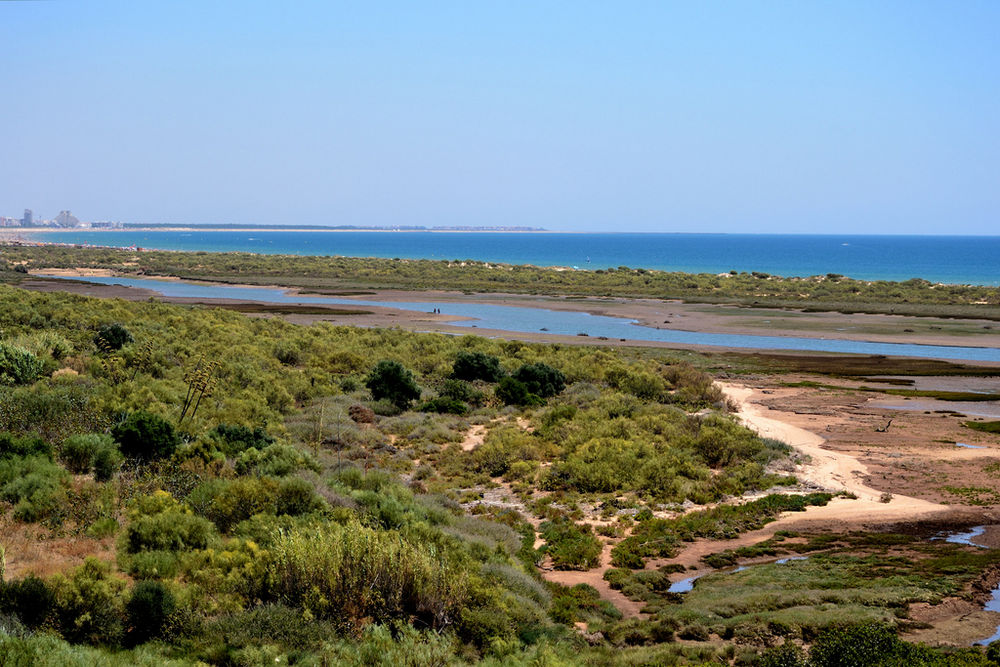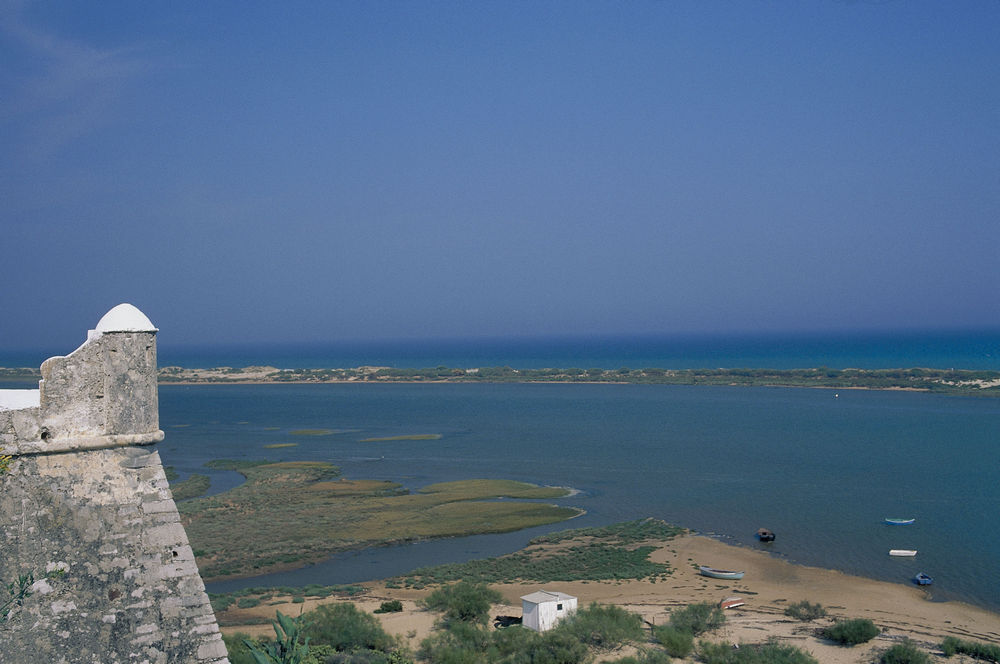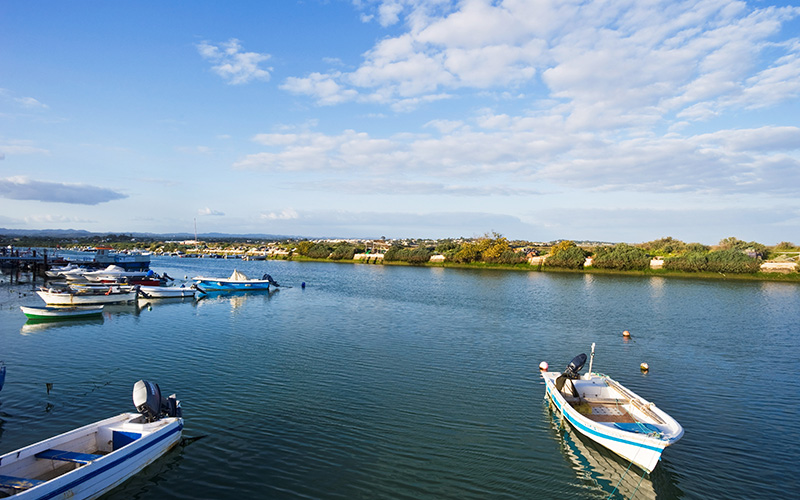- Algarve
- Travel Guides
- Explore Ria Formosa Natural Park

Explore Ria Formosa Natural Park
The Ria Formosa estuary is a naturally formed network of lagoons, reefs and islands that stretches for 60 kilometres along the coast of the Algarve. Formed by the barrier islands that shield it from the Atlantic Ocean, this constantly shifting labyrinth is a place of breath-taking natural beauty.

The importance of the park
Officially classified as a protected nature park in 1987, the Ria Formosa encompasses an area that is roughly 170 square kilometres, situated between the city of Faro and the picturesque village of Cacelha Velha. Attracting nature lovers, adventurers and wildlife enthusiasts, the area is a side to the Algarve experience that is well worth taking a day or two to visit.
When flying in to Faro Airport, the Ria Formosa National Park is a vibrantly coloured patchwork of white beaches, blue lagoons and green marshes. It’s within this protected area that you can find a number of different habitats ranging from barrier islands, dunes and saltpans, to fresh water lagoons, woodlands and marshes. These habitats are home to a rich diversity of wildlife, which is a major attraction for a large number of visitors each year.

The flora & fauna of Ria Formosa
The park is especially important to birdlife, as it is a major stop over point in the bird migration routes between Europe and Africa. Coastal birds such as Egrets, Flamingos, Cranes and Oystercatchers breed here, as well as other rare species such as the Purple Swamphen, which is the symbol of the national park and cannot be found in any other part of the country.

Visitors that would like to know more about Ria Formosa’s wildlife (including the Purple Swamphen) can visit the Marim Environmental Education Centre, where various trails and observatories are set up to witness the activities of a number of local wildlife species.
The indigenous plant species found in Ria Formosa include some that are exclusive to the area, including Sea Lavender, Yellow Hoop Petticoat Daffodils, and the fascinating Bumblebee Orchid. The Bumblebee Orchid features buds that look identical to bees, as to attract actual bees to aid pollination, and these are easily spotted when walking the pathways throughout the reserve.

Get to know the locals
The people who have made Ria Formosa their home live their lives in close harmony with the natural landscape. Due to the shallow waters, the lagoon acts as a nursery for many oceanic species, some of which have a high commercial value. Shellfish farming here accounts for 80% of the Portuguese clam exports.
Other traditional trades include extracting the highly sought after salt from the marshes (which is then sold at a high price to top chefs around the world), gathering shellfish such as mussels, razors, clams and oysters, and then using these ingredients with great skill to create delicious gastronomic specialities. Many seaside restaurants, such as the fantastic Restaurante Ria Formosa in Olhâo, incorporate local seafood into a number of their dishes. This particular restaurant is an absolute must as part of your visit.
Another fascinating aspect of life here is the close-knit relationship between the local people and the friendly breed of dog known as the Portuguese Water Dog. These long haired dogs have historically been used to assist fishermen by diving into the waters and helping raise the nets. You’re bound to spot one or two of these intriguing looking dogs at some point.

Things to see & do
From either Faro or Olhâo, you can ride the regular ferry service to the remote barrier islands of Armona, IIha Tavira, Culatra and Barreta. This can be a great experience, and one that will show you some of the best natural sights of the region. Some of these islands feel completely isolated, with very few visitors, and just a smattering of cottages occupied by friendly and curious fishermen. There is also a 24hr water taxi service that costs between €6-15 depending on the distance.
In order to explore a little further, it’s well worth visiting the beautiful, quaint village of Cacela Velha on the eastern most point of Ria Formosa. This small, whitewashed town features some rich historical heritage, with fantastic views of the nearby lagoons from atop the fortress.

Don't miss out
A visit to Olhâo is also a must, as there is plenty to see and do there. There are a few well laid out guided walks you can take part in that explore different aspects of life in Ria Formosa. Along the way you’ll learn all about the salt marshes and salt production facilities, the traditional agriculture and the dunes, as well as the pine woodlands. Included in the tour is a visit to a traditional farmhouse, a tidal mill, and even some Roman ruins.
You can also opt for one of the many different boat trips from Olhâo. Some specialise in birdwatching, whilst others focus on the history of fishing, or the barrier islands. There is even a silent, solar powered boat trip to make the experience all the more ecologically friendly. You could, of course, always choose to charter a sailboat and explore by yourself.
However you choose to spend your time, should you visit Ria Formosa, you’ll undoubtedly be left with a sense of appreciation for the stunning natural beauty and the welcoming, friendly people who are lucky enough to call it home.